JE Audio HP20 Phono Preamplifier
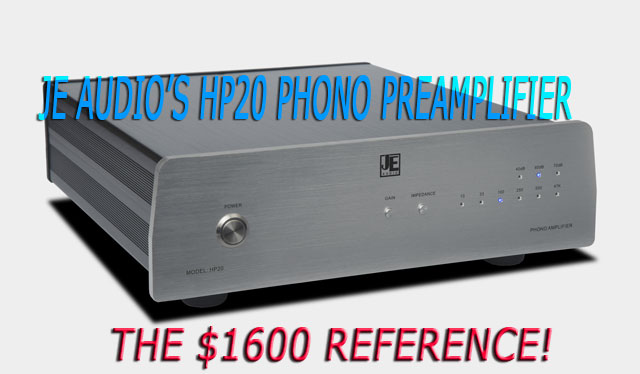
 This past year has felt like an age of discovery, an audio equipment renaissance in a lot of respects. A lot of us sit around talking with other audiophiles and we talk about how prices are skyrocketing and why manufacturers can’t further the performance aspects of our hobby without costs going crazy. I have come to realize that there are equipment designers that are doing just that and who are making some serious inroads to exactly that.
This past year has felt like an age of discovery, an audio equipment renaissance in a lot of respects. A lot of us sit around talking with other audiophiles and we talk about how prices are skyrocketing and why manufacturers can’t further the performance aspects of our hobby without costs going crazy. I have come to realize that there are equipment designers that are doing just that and who are making some serious inroads to exactly that.
We were introduced to the Tekton Design Double Impact speakers which at $3,000 can compete with almost any speaker on the planet. We also saw the Tellurium Q Black II speaker cable that for 56 pounds (approximately $74 USD) per meter performed comparably with speaker cables costing many times more. The other piece that I encountered that really surprised me was the was JE Audio HP20 phono preamplifier, the subject of this review. Spending time with the VAC Renaissance Mk V preamplifier, and its internal phono section, bought me back to a great appreciation for my vinyl collection. I have worked with JE Audio’s John Lam on a couple of review endeavors in the past and have found him to always be knowledgeable, helpful, approachable and responsive to questions in a short amount of time. I had mentioned to John my interest in all things analog and that I still did quite a bit of listening to vinyl. I mentioned to John that I would be interested in reviewing one of JE Audio’s two phono preamps; the more expensive JE Audio HP10 which Dave Thomas reviewed last year (here), and the JE Audio HP20. Jon agreed to have me review the HP20 and a review sample was shipped.

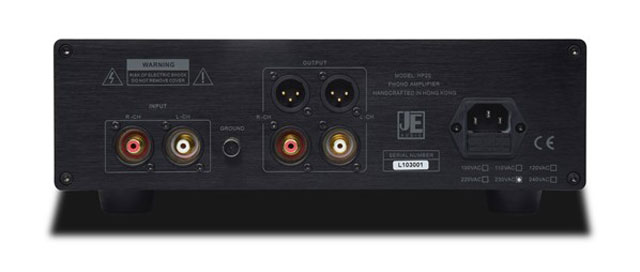
About the HP20
 After a couple of email exchanges with Jon, the HP20 arrived. The HP20 came neatly packed complete with owner’s manual and power cord. While unpacking the HP20, the first impression I got was of how solid and heavy it was. This was supposed to be the $1,600 solid-state little brother to the more than two times expensive, vacuum tube based HP10. But as far as that goes, there was no skimping on construction quality nor the feature set of the HP20. The HP20 measures in at D=356mm X W=325mm X 110mm and weighs 6.6kg/14.5 pounds. The HP20 has a silver faceplate with a black case and a black rear plate. On the faceplate, to the left, there is a power pushbutton and two smaller pushbuttons that allow you to select “Gain” and cartridge “Impedance”. These pushbuttons are very much similar to what you would find on the HP10 though the HP10 has a few more buttons and allows for more functionality.
After a couple of email exchanges with Jon, the HP20 arrived. The HP20 came neatly packed complete with owner’s manual and power cord. While unpacking the HP20, the first impression I got was of how solid and heavy it was. This was supposed to be the $1,600 solid-state little brother to the more than two times expensive, vacuum tube based HP10. But as far as that goes, there was no skimping on construction quality nor the feature set of the HP20. The HP20 measures in at D=356mm X W=325mm X 110mm and weighs 6.6kg/14.5 pounds. The HP20 has a silver faceplate with a black case and a black rear plate. On the faceplate, to the left, there is a power pushbutton and two smaller pushbuttons that allow you to select “Gain” and cartridge “Impedance”. These pushbuttons are very much similar to what you would find on the HP10 though the HP10 has a few more buttons and allows for more functionality.
The rear-plate is very similar to that of the HP10 with the biggest difference being that the HP20 has one set of RCA phono inputs to be used for both MM and MC cartridges, while the HP10 has two sets of RCA phono inputs, one for MM and another for MC cartridges. There is a single grounding connector next to the inputs and a single pair of XLR outputs and one pair of single ended outputs. Finally, there’s the fuse protected IEC connector that of course allows for aftermarket power cords. That’s it. The HP20 is as solidly built as any other phono preamp at its price point that I know of. And believe me, that’s saying something.
How it sounds
 In terms of the performance of the HP20, I’ll put it this way, based on what I heard from the HP10, I wasn’t surprised that it sounded good but I was surprised at just how good it sounded given its price tag. The HP20 has a sense of ease and openness to it that does not come with phono preamps at this price. It is very musical and eerily quiet with not much background noise. This level performance was more indicative of a more expensive preamp. Sonically, the HP20 does a fine job of capturing tonal colors and paints a picture with a palette that is slightly warm but not close to being objectionable. It won’t be confused with being a detail-hawk like a Klyne but the HP20 does retrieve a goodly amount of detail.
In terms of the performance of the HP20, I’ll put it this way, based on what I heard from the HP10, I wasn’t surprised that it sounded good but I was surprised at just how good it sounded given its price tag. The HP20 has a sense of ease and openness to it that does not come with phono preamps at this price. It is very musical and eerily quiet with not much background noise. This level performance was more indicative of a more expensive preamp. Sonically, the HP20 does a fine job of capturing tonal colors and paints a picture with a palette that is slightly warm but not close to being objectionable. It won’t be confused with being a detail-hawk like a Klyne but the HP20 does retrieve a goodly amount of detail.
The high frequency performance of the HP20 is good, not over the top but very natural. The imaging characteristics for the HP20 is about average. Upper, mid and lower bass performance are average to good and never left me feeling like I needed more. It is the midrange where the HP20 excels. Though it is not a tubed unit, instruments sound natural, organic even, with a very god sense of dimensionality. Spatial cues were clear and it was easy to follow individual instrumental lines even when music became loud and discordant. Transient response, such as the popping of snare drums, or a trumpet riff, or hearing the rosin-like sound of a bow going across a violin string, the HP20 captured it realistically. These attributes would be very understandable if they were being delivered by the HP20’s bigger sibling, the vacuum tube driven HP10. That the HP20 could be even recognized as being a family mate with the more expensive HP10 is quite remarkable.
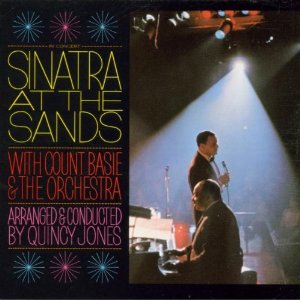 In terms of musical references, I borrowed a recording from Dave Thomas that he says has been a longtime favorite of fellow ST contributor Norm Luttbeg’s; Frank Sinatra’s, Sinatra At The Sands [Reprise]. Everything about this vinyl recording is top shelf. Mr. Sinatra’s vocals, and his ability to work the crowd, Count Basie and his orchestra play a brilliant supporting role with the music and the arrangements were done by Quincy Jones. Three musical giants collaborating to bring you a two-album set of musical genius and enjoyment. The HP20 did a great job with the vocalizations of Mr. Sinatra, who sounds at the top of his game here, but also those of the audience, who seem very in tune with him judging by their reactions. The caliber of the recorded sound of the venue, and the energy of the crowd, is noteworthy for sounding real coming through the HP20. Oh, by the way, by way of this review I’m informing my brother Dave that he won’t be getting his album back. Sorry bro.
In terms of musical references, I borrowed a recording from Dave Thomas that he says has been a longtime favorite of fellow ST contributor Norm Luttbeg’s; Frank Sinatra’s, Sinatra At The Sands [Reprise]. Everything about this vinyl recording is top shelf. Mr. Sinatra’s vocals, and his ability to work the crowd, Count Basie and his orchestra play a brilliant supporting role with the music and the arrangements were done by Quincy Jones. Three musical giants collaborating to bring you a two-album set of musical genius and enjoyment. The HP20 did a great job with the vocalizations of Mr. Sinatra, who sounds at the top of his game here, but also those of the audience, who seem very in tune with him judging by their reactions. The caliber of the recorded sound of the venue, and the energy of the crowd, is noteworthy for sounding real coming through the HP20. Oh, by the way, by way of this review I’m informing my brother Dave that he won’t be getting his album back. Sorry bro.
 Another wonderful vinyl offering that I’ve been gravitating towards has been Patricia Barber’s, Patricia Barber Live: A Fortnight In France [Blue Note]. This too is a great two album recording that sounded exceptionally good through the HP20. In terms of the performances, it’s pretty much standard Patty Barber doing “Blue Prelude”, “Laura” and “Pieces” as well as newer offerings such as “Gotcha” and “Whiteworld”. During this performance “Norwegian Wood”, started off with Ms. Barber doing the first couple of choruses but when her backing musicians, Neal Alger on guitar, Michael Arnopol on bass, and Eric Montzka on drums, give a rather spirited and dynamic performance when they take over two thirds of the way in and take turns soloing. HP20 really showed its mettle handling the increase in dynamic gradations and transient detail, as well as the audiences loud approval for the groups effort.
Another wonderful vinyl offering that I’ve been gravitating towards has been Patricia Barber’s, Patricia Barber Live: A Fortnight In France [Blue Note]. This too is a great two album recording that sounded exceptionally good through the HP20. In terms of the performances, it’s pretty much standard Patty Barber doing “Blue Prelude”, “Laura” and “Pieces” as well as newer offerings such as “Gotcha” and “Whiteworld”. During this performance “Norwegian Wood”, started off with Ms. Barber doing the first couple of choruses but when her backing musicians, Neal Alger on guitar, Michael Arnopol on bass, and Eric Montzka on drums, give a rather spirited and dynamic performance when they take over two thirds of the way in and take turns soloing. HP20 really showed its mettle handling the increase in dynamic gradations and transient detail, as well as the audiences loud approval for the groups effort.
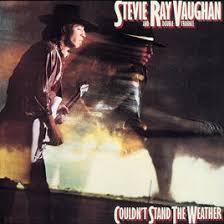 There is no way to evaluate the HP20 without playing Stevie Ray Vaughn’s Couldn’t Stand The Weather [Epic]. This is a great, great album with not a bad track on it. You don’t have to be a SRV fan to appreciate the virtuoso guitar playing on this album and the energy with which the band plays with. My favorite track on this album, of course, is “Tin Pan Alley”, as well as “Cold Shot”, but Tin Pan Alley is the first track I think about when I reach for this album. The CD version of this album sounds very good as well, but the vinyl version is special. There is so much there to enjoy. SRV’s bluesy wailing, with emphasis, at the end of each chorus, the guitar rifts, the loud, dynamic drum whacks, and even the hum coming from the guitar amplifier that can be heard distinctly at the end of the track all add to the character of this track. The HP20 handles, with aplomb, the rich amount of detail, SRV’s finger licks and raspy vocals, and the strong bass line this album affords. I was startled at first at how good this album sounded through the HP20 and is what convinced me just how good it’s performance was. For female vocals I listened to Ella Fitzgerald’s Clap Hands, Here Comes Charlie! [Verve]. Ms. Fitzgerald, she of the lightnin’ chops with her highly developed ability to scat, does a good job here with the tracks like “Night in Tunisia” and “Jersey Bounce”, but it’s the more heartfelt, downhearted and disconsolate tracks, like “My Reverie”, “Signing Off”, and “Spring Can Really Hang You Up” that attracted me the most. She feels with passion and emotion that I felt like I could connect to what she was singing about. The HP20 did a good job of communicating the sentiment in the message that Ms. Fitzgerald conveyed in the song. And for the super analog audiophiles out there, I purchased just for this review and listened to
There is no way to evaluate the HP20 without playing Stevie Ray Vaughn’s Couldn’t Stand The Weather [Epic]. This is a great, great album with not a bad track on it. You don’t have to be a SRV fan to appreciate the virtuoso guitar playing on this album and the energy with which the band plays with. My favorite track on this album, of course, is “Tin Pan Alley”, as well as “Cold Shot”, but Tin Pan Alley is the first track I think about when I reach for this album. The CD version of this album sounds very good as well, but the vinyl version is special. There is so much there to enjoy. SRV’s bluesy wailing, with emphasis, at the end of each chorus, the guitar rifts, the loud, dynamic drum whacks, and even the hum coming from the guitar amplifier that can be heard distinctly at the end of the track all add to the character of this track. The HP20 handles, with aplomb, the rich amount of detail, SRV’s finger licks and raspy vocals, and the strong bass line this album affords. I was startled at first at how good this album sounded through the HP20 and is what convinced me just how good it’s performance was. For female vocals I listened to Ella Fitzgerald’s Clap Hands, Here Comes Charlie! [Verve]. Ms. Fitzgerald, she of the lightnin’ chops with her highly developed ability to scat, does a good job here with the tracks like “Night in Tunisia” and “Jersey Bounce”, but it’s the more heartfelt, downhearted and disconsolate tracks, like “My Reverie”, “Signing Off”, and “Spring Can Really Hang You Up” that attracted me the most. She feels with passion and emotion that I felt like I could connect to what she was singing about. The HP20 did a good job of communicating the sentiment in the message that Ms. Fitzgerald conveyed in the song. And for the super analog audiophiles out there, I purchased just for this review and listened to
Final thoughts
Performance-wise, there were no difficulties encountered with HP20. No clicks, no bumps and no hum. One aspect of the HP20 performance that I was totally blown away with was with the length of cable it was able to drive. I was getting tired of walking to the other end of the room to plan an album only to miss the first 15 seconds or so as I walked back to my seated position. I had the bright idea to put the turntable near the sofa which puts the phono about 20 feet away from the preamp. I found a 6-meter run of balanced Shunyata interconnect and ran it from the XLR out of the HP20 to my preamp and there was no loss of information, no hum, no sonic issues whatsoever. I was floored by this performance but at the same happy to be able to set my turntable right next to the sofa. I asked friends if they heard any differences or any noise or loss of fidelity and there was none that they were able to perceive.
Looking at how the HP20 faired in some comparisons, it did hold its own very well. Of course, I was able to borrow Dave Thomas’ Pass Lab XP-15 which is an older phono preamp but still a good performer. I felt the HP20 did a slightly better job with a quieter noise floor, better dynamics and an airier top end. The XP-15 wasn’t too far off from the HP20’s performance in these areas and had slightly better bass. From there, next up was the phono section from a new kid on the block; the MastersounD Box from Italy. This is a $3,000 integrated amplifier with a nice phono section that’s not merely a throw-in or a marketing ploy. To be fair, the .4 mV output from my Transfiguration Phoenix was not really a fair comparison as I had to use a step-up transformer that I really didn’t think did the MastersounD phono section much justice. Suffice it to say, the HP20, which I was able to dial in the sound of the Phoenix, was the better sounding performer under the circumstances. Please keep in mind that these next two comparisons were done with preamps with built-in phono sections as it was not easy to get my hands on other stand-alone phono preamps other than the Pass Labs. First up was the beautiful sounding phono section of my Electron Images Amati. The phono section of the Amati had a presentation that was dreamy. The HP20 projects a nice soundstage while the Amati’s soundstage is larger more dimensional and just seems to breathe life into all of the music that is played through it. The HP20’s bass performance was tighter and was deep as well while the Amati’s bass sounded warmer and at the same time seemed slightly more powerful with more energy. The next comparison was to the phono section of my VAC Renaissance Mk V. Once more, the HP20 sounded like a performer that whose flaws would be hard to hear unless you had nothing better to do but pick at nits. When the VAC started to entertain the same music that was played through the HP20, I was caught off guard at just how good Kevin Hayes is at designing phono stages. To that point, everything sounded more naural and life-like to a level that the HP20 was not quite able to match.
To be honest and fair, the HP20 at $1,600 to be even be compared with tube preamps, with internal phono stages, that cost over $10,000 is saying quite a bit. The other audio nugget to point out was that though I enjoyed the vinyl performance through the Amati and the VAC preamps better, each time I went back to the HP20 I never felt like it had been outclassed or that its performance was so much less than the tubed units that I couldn’t listen to it. In all honesty, these comparisons told me two things that stood out. First, from what I remember, the vacuum tube based JE Audio HP10 would probably be a better comparison to the tubed phono sections of the VAC and Amati. The other thing I would point out is that the sonic performance of the HP20 is really not that far off from the performance of the HP10. No, it’s not quite as exacting or as refined as the $3,300 HP10, but it’s pretty close to that. My guess would be that the HP20 is about 80-85% of the HP10’s performance. If you’re a serious analogue aficionado, that extra 15-20% could loom large. I know it would for me. But if you don’t have quite that amount of money for an HP10, the HP20 affords you outstanding analogue performance at its price point. The level of performance the JE Audio renders at its $1,600 price point is quite an accomplishment and is highly recommended.


mike wright
Specifications:
PRICE
$1,600.00 USD.
Warranty: Three years parts and labor.
(Specifications subject to change without prior notice.)
PRODUCT DESIGN
A stereo MM/MC phono amplifier with passive RIAA equalizer
INPUT
One set for MM or MC
OUTPUT
One set of unbalanced and one set of balanced output
MM GAIN
40dB for unbalanced output and additional 6dB for balanced output
MM INPUT IMPEDANCE
47k Ohm
MC GAIN
60 and 70dB for unbalanced output and additional 6dB for balanced output
MC INPUT IMPEDANCE
10, 33, 100, 250, 500 Ohm
RIAA DEVIATION
20 – 20,000Hz, ±0.3dB (for MM and MC)
DISTORTION
0.05%
OUTPUT IMPEDANCE
430 Ohm for unbalanced output
860 Ohm for balanced output
MINIMUM LOAD IMPEDANCE
10k Ohm
SIGNAL TO NOISE
70dB for MC, 85dB for MM
POWER CONSUMPTION
12W
DIMENSION
110 x 325 x 356mm (H x W x L)
NET WEIGHT
6.6kg/14.5pounds
Address:
JE Audio
Unit L, 5/F, Block 1
International Industrial Center
2-8 Kwei Tei Street, Fotan, Shatin
Hong Kong
Phone: (852) 3543-0973
Fax: (852) 3543-0971
E-mail: admin@je-audio.com
Website: www.je-audio.com
US Distributor:
A/V Solutions
Phone: (925) 425-0450
E-mail: jbwhitlock1@aol.com
Website: www.avsolutionsca.com
Stereo Times Masthead
Publisher/Founder
Clement Perry
Editor
Dave Thomas
Senior Editors
Frank Alles, Mike Girardi, Russell Lichter, Terry London, Moreno Mitchell, Paul Szabady, Bill Wells, Mike Wright, and Stephen Yan,
Current Contributors
David Abramson, Tim Barrall, Dave Allison, Ron Cook, Lewis Dardick, John Hoffman, Dan Secula, Don Shaulis, Greg Simmons, Eric Teh, Greg Voth, Richard Willie, Ed Van Winkle, Rob Dockery, Richard Doran, and Daveed Turek
Site Management Clement Perry
Ad Designer: Martin Perry



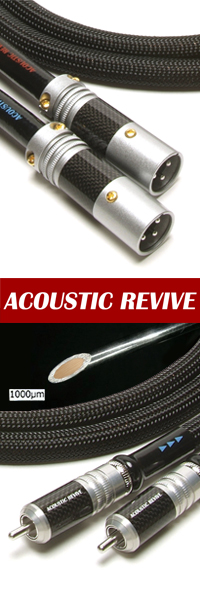



Be the first to comment on: JE Audio HP20 Phono Preamplifier